Kanji for Rest or Holiday: 休 (Yasu-mi / Yasu-mu)
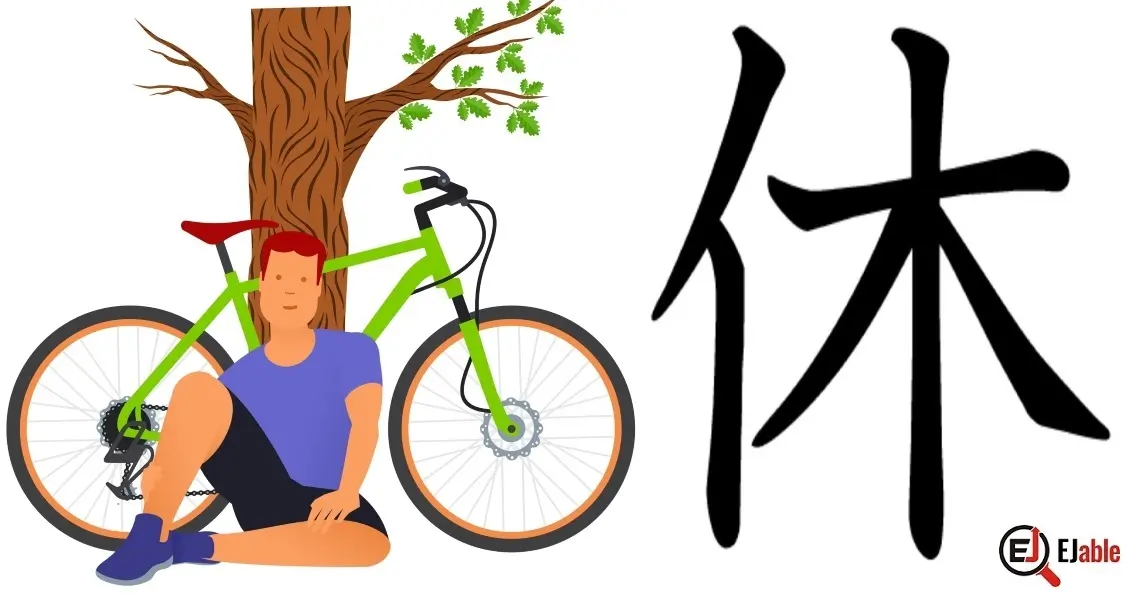
The Japanese kanji for “Rest” or “day-off (holiday)” is 休.
The pronunciation of the Kanji 休 is “Yasu” (やす) in its kun’yomi (Japanese reading) and “kyu” (キュウ) or “ku” (ク) in its on’yomi (Chinese reading). Please note that the Kun’yomi reading “Yasu” is not a standalone word in Japanese, and this Kanji appears in words like “Yasu-mi” (やす-み), yasu-maru (やす-まる), “yasu-mu” (やす-む), and “yasu-meru” (やす-める).
The Kanji 休 is constructed with 6 strokes. This Kanji is a part of the JLPT N5 syllabus (please check the list of JLPT N5 Kanji). In Japanese schools, this Kanji is taught in grade 1.
Origin of the Shape 休
The origin of the shape of Kanji 休 and the logic behind it were very simple, and they remain the same now also. The kanji 休 depicts a man leaning against a tree.
休 is a combination of two components: the radical “亻” of the kanji of a person (人) and the Kanji meaning tree (木).
Over time, the shape of the kanji, meaning “rest,” evolved. However, during every stage of the evolution, it maintained the shape of these two components (person and tree) as they were drawn during the respective era.
Let’s see the evolution of the shape of the Kanji for rest (holiday) from ancient times to the current:
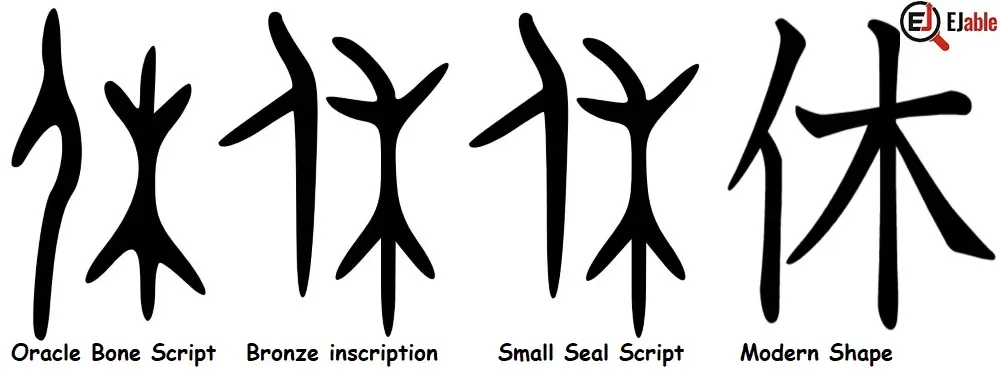
The above image shows the historical shape of 休 in Oracle Bone Script, Bronze inscription, small seal script, and how we write it in the present.
Mnemonic: How to Remember the Kanji 休
As mentioned above, the Kanji 休 is a pictogram of a person resting against a tree. Resting under the shadows of a tree was the typical way to take a break during the hot afternoons in the villages. And this logic is the perfect mnemonic to remember the shape of 休.
However, a picture is always easier to enter our subconscious mind, and hence, please refer to the following image to serve as the mnemonic to remember the Kanji 休:
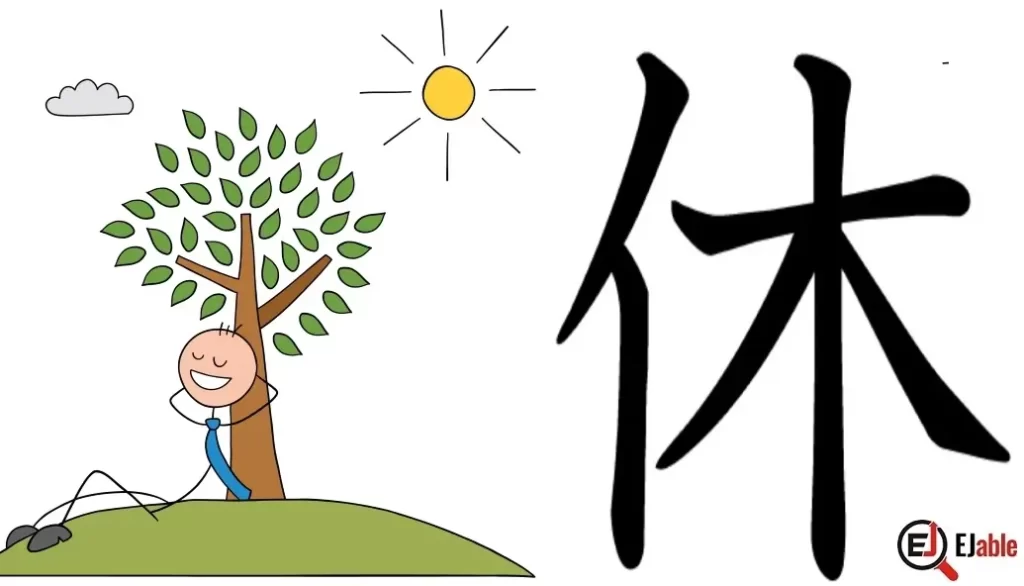
Stroke Order for the Kanji 休
The following illustrations show the stroke order of the 6 strokes to write the Kanji 休 for “rest”:
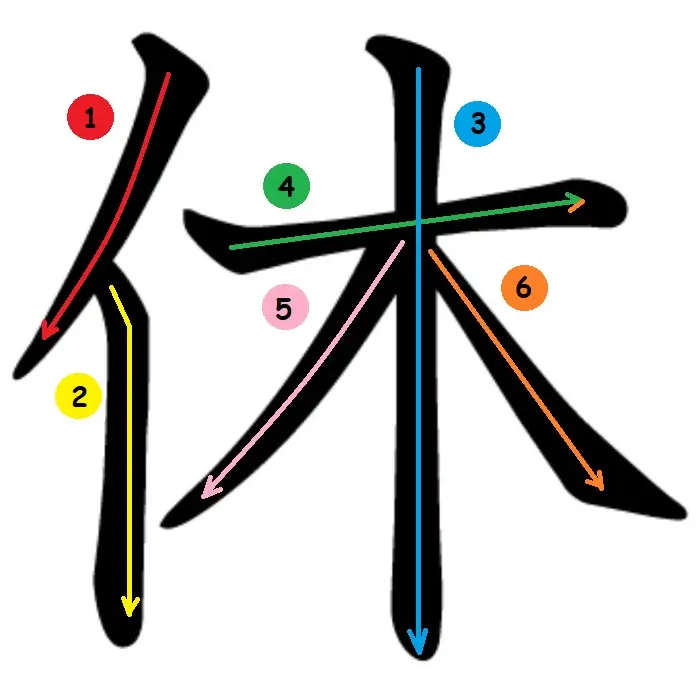
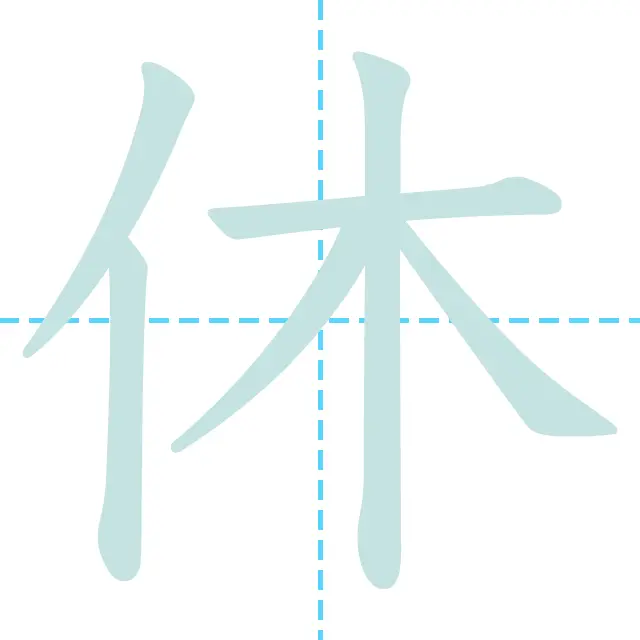
Kanji 休 in Compounded Words
The kanji 休 appears commonly in Japanese and forms part of many compound words. There are 106 Japanese words that begin with the Kanji 休, and it appears in 195 words.
Examples of Kanji 休 in Compounded Kanji Characters
Following are the examples where the Kanji for “rest” (休) appears in Japanese compounded Kanji characters:
- 休日 (きゅうじつ / kyūjitsu): Holiday, day off.
- 休息 (きゅうそく / kyūsoku): Rest, break.
- 休憩 (きゅうけい / kyūkei): Break, recess.
- 休暇 (きゅうか / kyūka): Vacation, leave.
- 休業 (きゅうぎょう / kyūgyō): Closure, suspension of business.
- 休養 (きゅうよう / kyūyō): Recuperation, convalescence.
- 休止 (きゅうし / kyūshi): Pause, suspension.
- 定休日 (ていきゅうび / teikyūbi): Regular holiday, fixed day off.
- 休学 (きゅうがく / kyūgaku): Leave of absence from school.
- 夏休み (なつやすみ / natsu yasumi): Summer vacation.
- 冬休み (ふゆやすみ / fuyu yasumi): Winter break.
- 春休み (はるやすみ / haru yasumi): Spring break.
- 休戦 (きゅうせん / kyūsen): Ceasefire, armistice.
- 休講 (きゅうこう / kyūkō): Cancellation of a class or lecture.
- 休場 (きゅうじょう / kyūjō): Suspension of a market or trading.
These compound words demonstrate the versatile use of 休 in various contexts, from describing physical rest to indicating breaks, holidays, and cessation in a range of activities.
Please also note that the Kanji 休 appears as a component in 8 other Kanji characters; however, none of those is Jōyō (commonly used) Kanji characters.
Note: Check other Kanji characters listed in the article “How to Remember Kanji“. You may also like to read about the common Kanji radicals.

A long-term ex-pat in Japan, Himanshu comes with an IT background in SAP consulting, IT Business Development, and then running the country operations of an IT consulting multinational. Himanshu is the co-founder and Managing Director of ReachExt K.K. and EJable.com. He is also an Advisory Board Member of a Silicon Valley AI/IoT startup.
